Knowing the best camera settings for Christmas lights is crucial to getting the best pictures. Christmas is a time for family, friends, fun, and lots of photos. With the right camera settings, you can capture the Christmas season’s magic in all its glory!
Generally, these are the three best camera settings for Christmas lights in Manual mode:
We go into more detail below. You can use the jump links above to go to each section. But first, we discuss your camera setup for taking photos of Christmas lights.
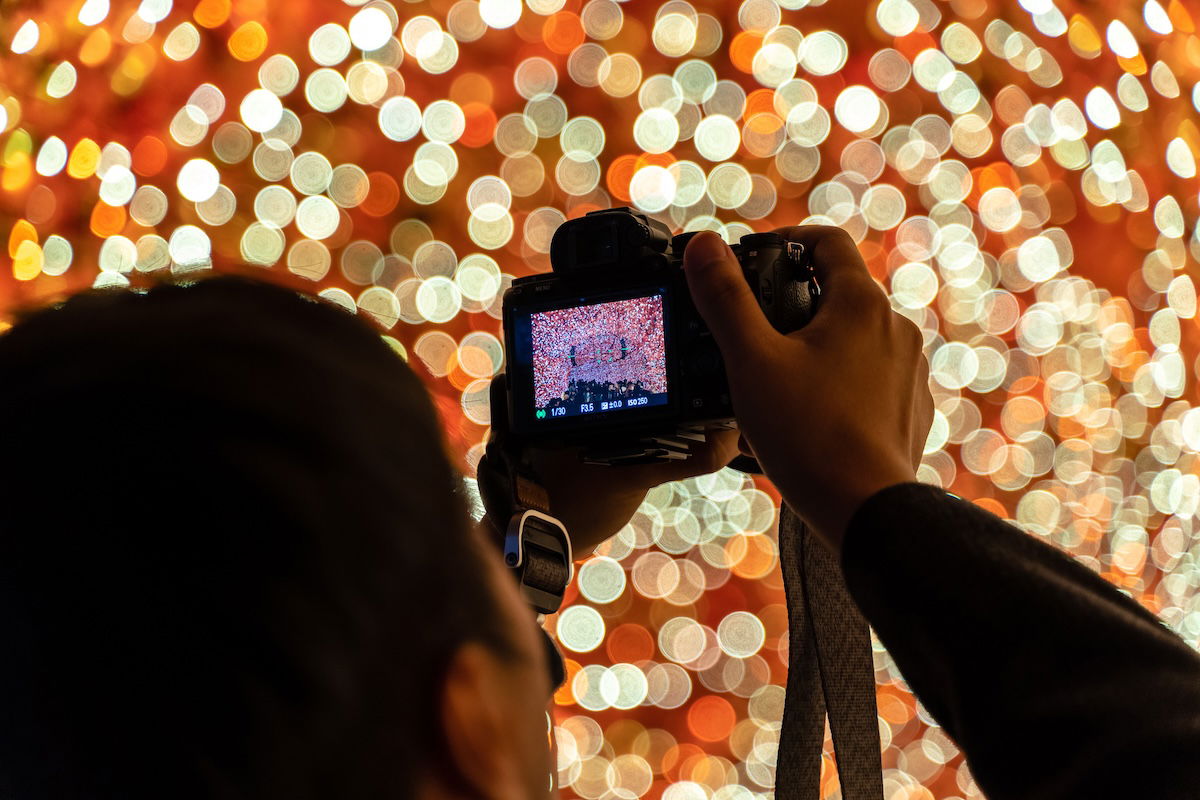
First, it’s best to use a tripod to minimize the risk of blur. Slow shutter speeds capture holiday lights in their full glory. But they also leave your photo vulnerable to motion blur.
A clumsy gesture or a falling prop in the frame can cause motion blur. So, be careful not to move the items in your composition during exposure.
I recommend shooting with a tripod every time you take still-life photography images. Using a tripod lets you focus on the fine details of your composition.
A tripod is best when capturing Christmas lights and fairy lights. Plus, using a remote control is also useful. Shooting handheld compromises image quality too much.
If you don’t have a tripod, place the camera on a steady surface and use the camera’s self-timer. This helps prevent camera shake when releasing the shutter. An affordable tripod we recommend is the Amazon Basics 60″ Lightweight Tripod.
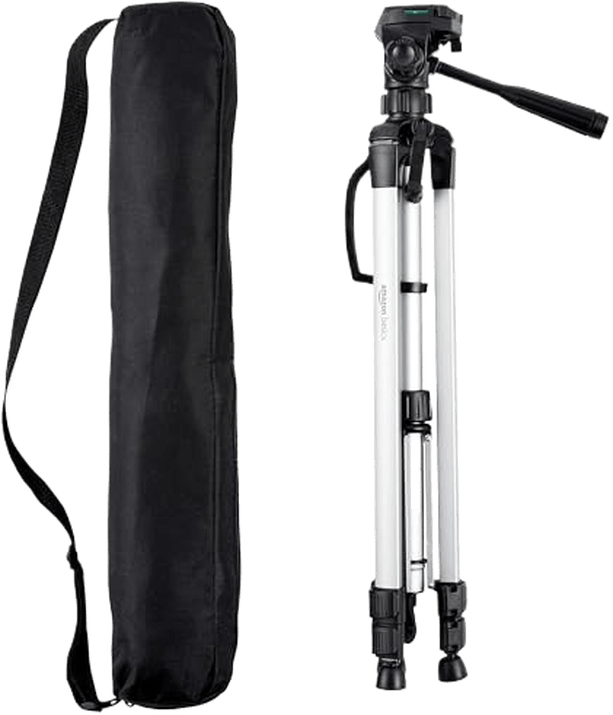
Second, forget about the flash built into your camera. This is a general photography tip, to be honest. In most cases, frontal light looks flat and unappealing. And when you’re trying to capture something as magical as Christmas lights, it’s even worse.
You’re likely far from your subject if you’re trying to capture holiday lights outside. The camera flash isn’t going to contribute much to the exposure.
If you’re shooting Christmas photos indoors, a camera flash tends to be too powerful. You may end up with an overexposed image. It overpowers all ambient light. And the resulting picture lacks a warm and cozy atmosphere.
A camera flash can also interfere with the colors of Christmas tree lights. Sometimes, this brings an unpleasant blue tinge.
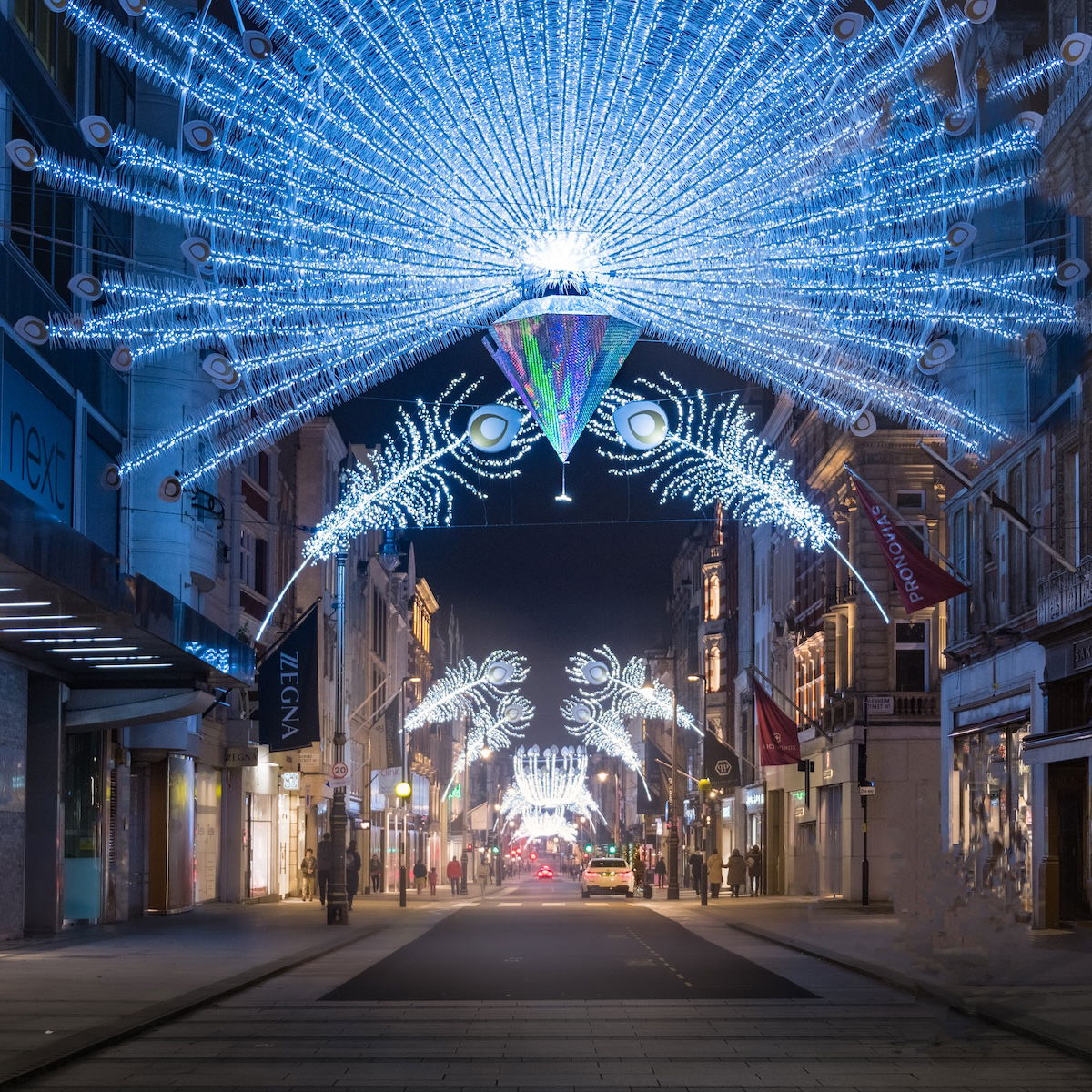
Christmas lights are beautiful but not very powerful. Our eyes adapt to dim light quickly, so we see the scene well. But cameras aren’t that sophisticated.
We need a relatively slow shutter speed to make the glow visible. The exact number depends on many factors. This includes details like the brightness of your particular lights compared to the ambient lighting.
If you’re using a tripod, I recommend starting with a shutter speed of 1/4 s (seconds) and lowering it from there. Take a test shot and see if you like the result. Set the shutter speed to two full seconds or even slower if the lights don’t look bright enough.
In the three images below, you can see the difference that a slow shutter speed makes. The camera takes in more light because of a slower shutter speed, making the Christmas lights brighter.
Don’t get carried away, though. If you set the shutter speed too long, you get an overexposed picture drowning in warm light. Again, if you’re shooting handheld or there’s movement, use a long enough shutter speed to offset camera shake and motion blur.

High ISO settings produce digital grain if you don’t have an ISO-invariant camera body. I usually shoot with artificial lighting I set purposefully. So, most of the time, I use the lowest ISO possible.
In cases where you can’t control the ambient light, a higher ISO can be useful.
Start with an ISO of around 100. That should be enough to overcome the problems of the dark environment. And increase your ISO from there, if necessary.
My settings for shooting the image below were the following:
If you need more light, I suggest increasing the exposure time first. Raising the ISO should be your last resort. But if you only use images online, you don’t have to worry about using higher ISOs as much.
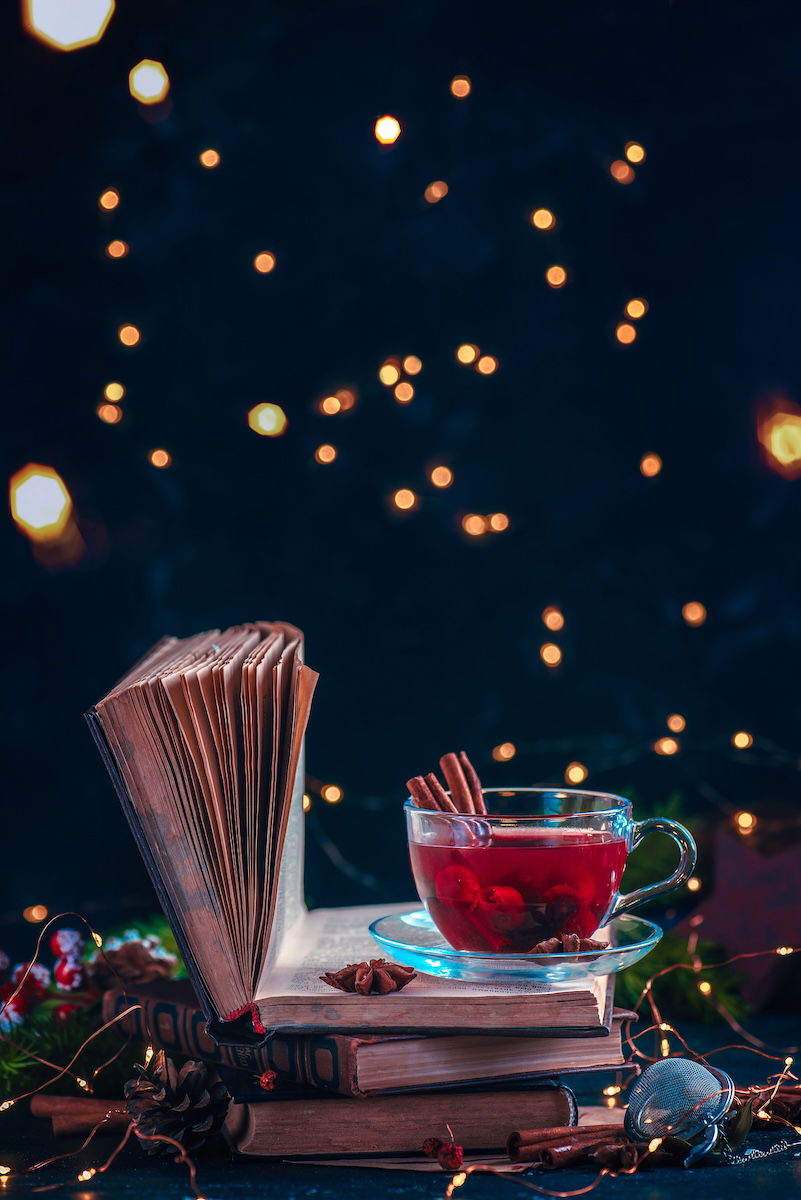
Perhaps you want to create warm, dreamy holiday photography. To do that, include a beautiful Christmas bokeh of blurred lights. This can be a nice subject or background for Christmas light photography.
You need a wide-open aperture more often than not. This creates a very shallow depth of field that throws your background out of focus. It also turns your Christmas lights into little balls of glowing warmth.
You can make the bokeh flares even bigger and blurrier. You do this by increasing the distance between your subject and the lights. You also need an aperture f-stop number around or below f/4 to get a decent bokeh in your images. Sometimes, you don’t even need any objects in focus.
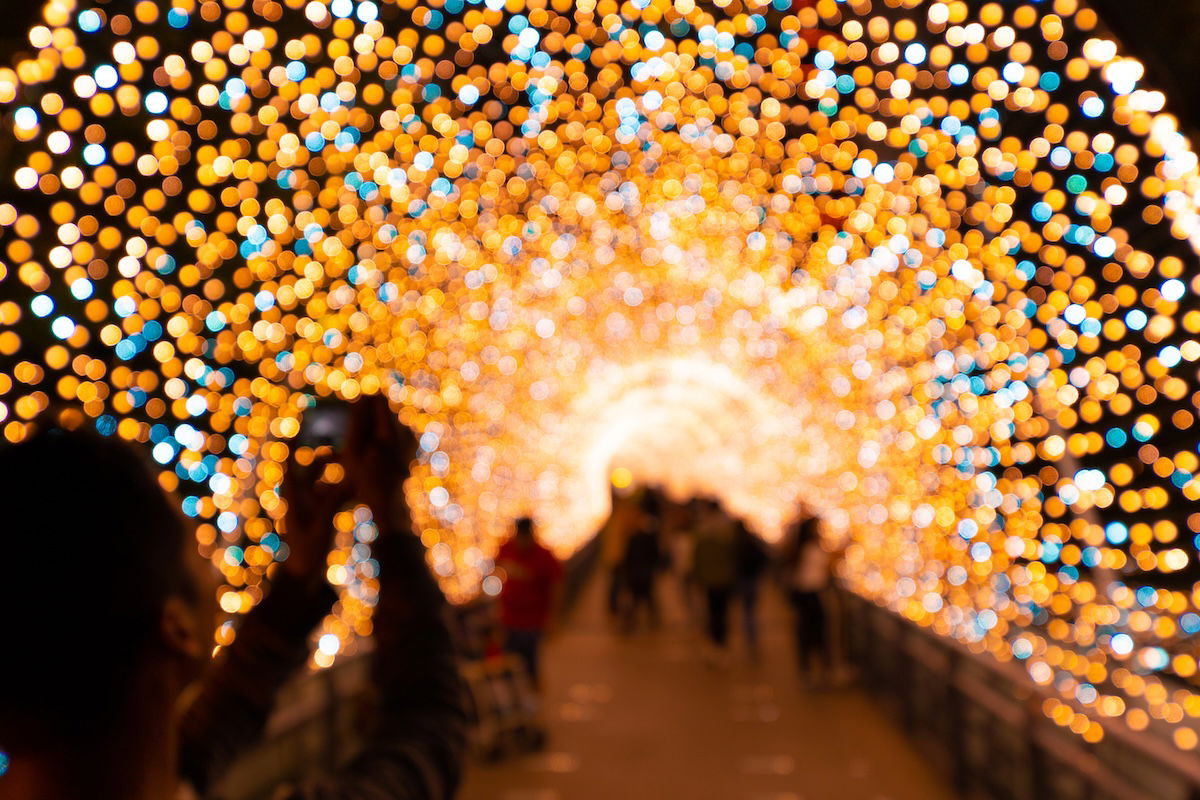
There are many ways to incorporate Christmas lights into your picture. They can serve as a decoration, background, or a primary lighting source. Here, we collected some photo ideas you can try with Christmas holiday lights.
There is no better way to capture the magic of the Christmas tree than covering it with lights and showing its shape with gorgeous bokeh. Use manual focus to blur the tree and let your lens create lovely bokeh from the tiny lights.

You can use the Christmas lights when taking photos of Christmas decorations on the tree. The closer you get to the subject and the wider aperture you use, the nicer the bokeh in the background is.

Try taking winter portraits with Christmas lights as the main light source for creative Christmas photos. Use spot metering and meter the light based on the lights. This way, they won’t be blown out. You get attractive low-key lighting on the person’s face.
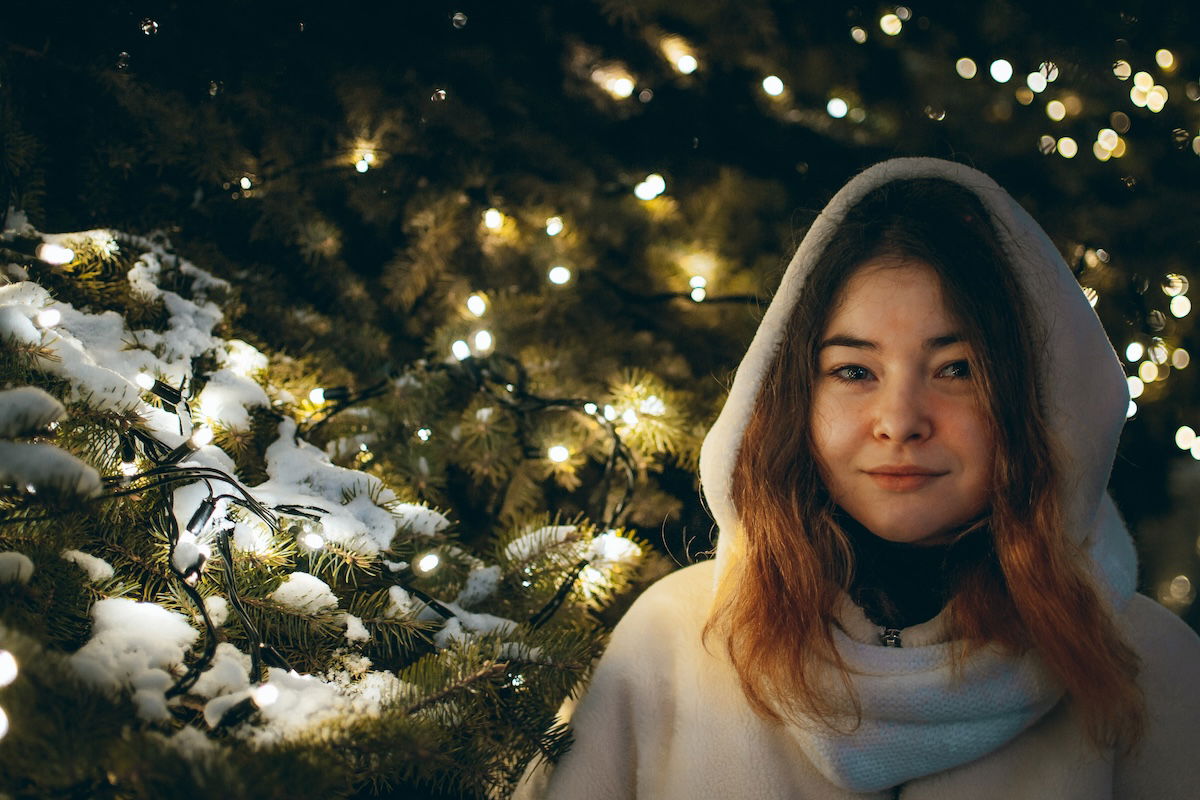
Bokeh can appear in different shapes (hexagons, octagons, etc.). This depends on the number of aperture blades in your lens. You can easily make custom bokeh shapes for your photos.
Make a fake lens hood from black paper and cut out the small shape you want in the center. Keep the shapes between 5 and 20 millimeters (mm). Set your camera to its lowest aperture value and enjoy the results of your custom bokeh filter.
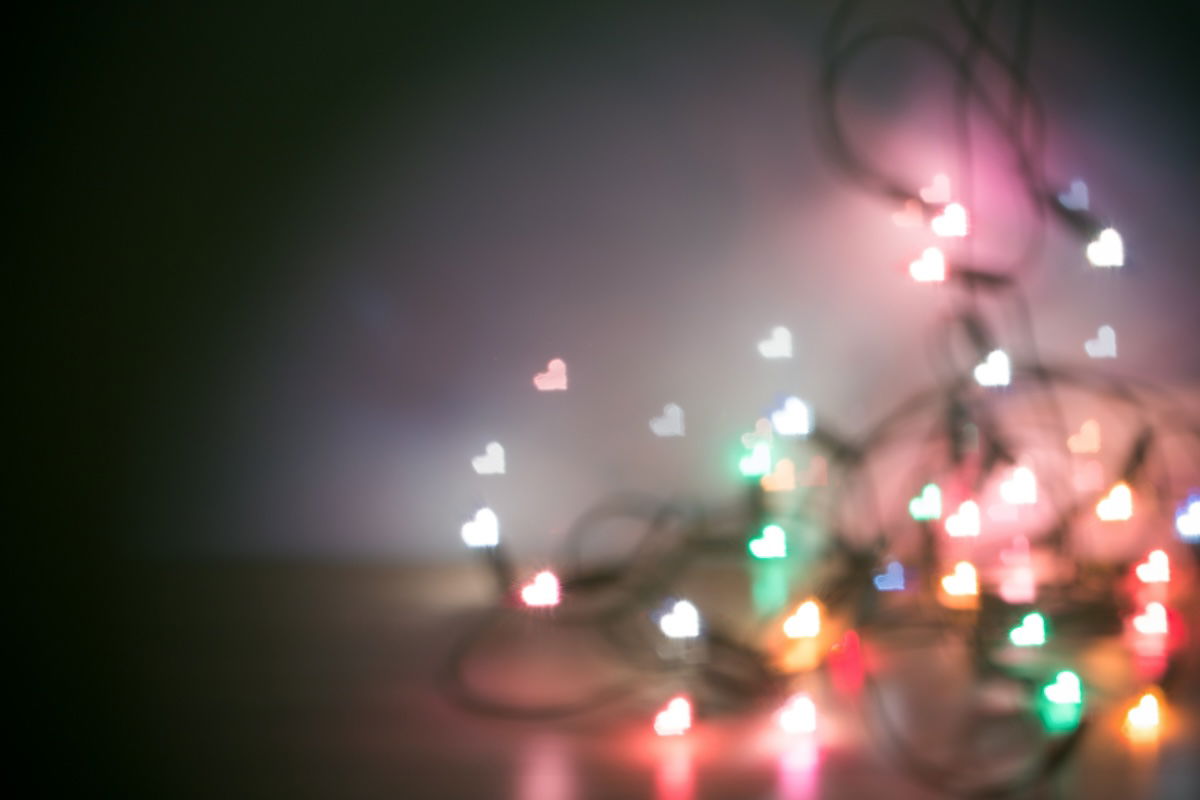
Christmas lights come in handy when taking Christmas photos. They are cheap, easy to find, and create a beautiful atmosphere in every image. We hope our article has shown you what to pay attention to when choosing camera settings for Christmas lights.
We wish you the most wonderful Christmas as you take photos this holiday season! Now it’s time to capture Christmas shots. But use the same tips to capture this magical feeling in the New Year!
